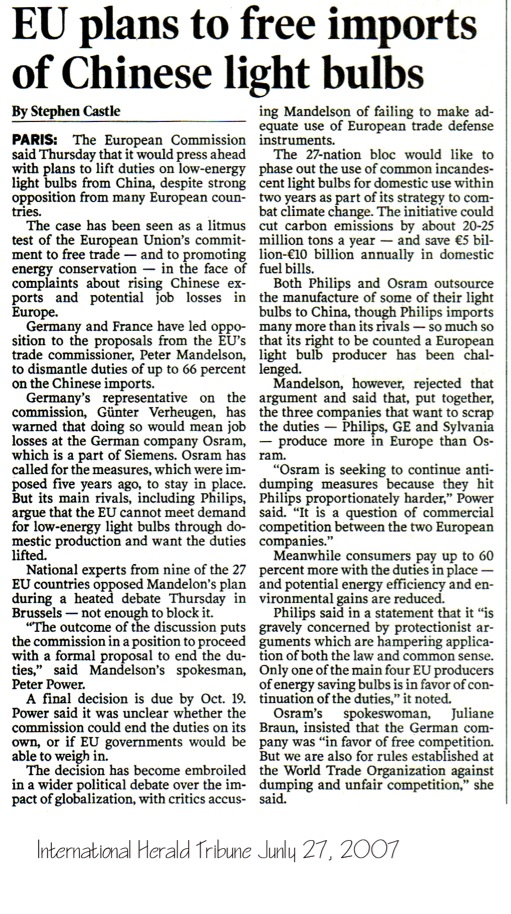Is it right that we buy these lamps from China? There is additional embodied energy cost in shipping, invariably some will be lost at sea polluting the ocean with mercury and other contaminants. We are on one hand exporting the dirty manufacture of these lamps to China while berating China for increasing pollution and CO2 emission from factories and power stations to make products for us. We also do not know about the human cost on the Chinese workers dealing with mercury and other contaminants in conditions that are far less rigorous for worker safety than in Europe or the USA.
It is worth noting that the major multinational lamp companies Philips and GE are in favour of these proposals as they increasingly source their branded products from Chinese manufacturers.


Yes, this is of course yet another angle to the needless ban…
Thanks for the article info, adding link here.
(How industrial politics behind the ban has continued since then, http://www.ceolas.net/#li1ax
More on China and mercury http://ceolas.net/#li193x )